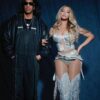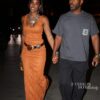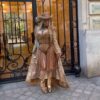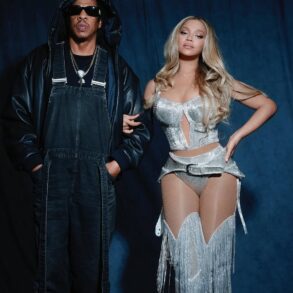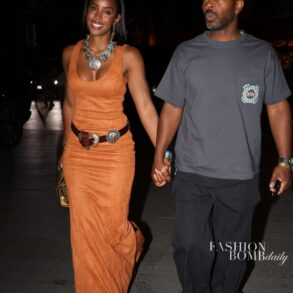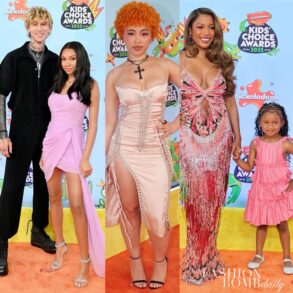Thursday 12th October 2023
Muralists Mr Cenz, Gent 48, and Joey ‘Jeba’ Green have taken their art to new heights in a partnership with Pepsi MAX. They’re honoring the legacy of The Notorious B.I.G. by creating eye-catching murals in London as part of the 50th Anniversary celebration of Hip Hop. These murals are a collaboration between Pepsi MAX, The Notorious B.I.G. Estate, and the Thirsty For More campaign, which aims to celebrate trailblazers like Biggie who defy conventions.
The murals draw inspiration from various aspects of the icon’s life, such as his Jamaican heritage, influence on fashion, and his relaxed approach to success in the rap industry. We caught up with the artists to delve into their creative process, Hip Hop and of course, their FAULTs.
Check out the murals now at Village Underground Shoreditch, Queen’s Road Peckham and 500 Brixton.
MR CENZ
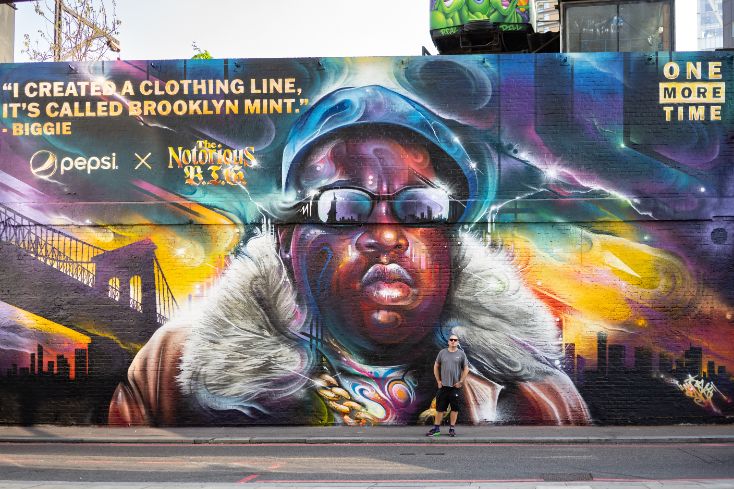
FAULT: Your mural in Shoreditch explores Biggie’s influence on hip-hop culture outside of music and his impact on fashion – what inspired you to focus on this aspect of his artistry?
Mr Cenz: Well fashion is a big influence on my work in terms of colour and style and the models I paint, so when Pepsi MAX challenged me to create a mural inspired by Biggie’s influence in the fashion space, it felt like a perfect fit. For me, Biggie was a real style icon as well as being the king of boom bap.
FAULT: Could you share some insights into your creative process when translating Biggie’s identity and cultural influence into a visual representation? Were there any particular challenges or highlights during the project?
Mr Cenz: The main challenge was to interpret Biggie in a unique and original way as he has been painted so many times before. For this project, where Pepsi MAX has partnered with The Notorious B.I.G. Estate to celebrate 50 years of Hip Hop and pay tribute to its everlasting cultural impact on the world, I wanted to express a futuristic, funky and soulful Biggie which matches the aesthetic of my work. Also, it was important for me to represent and capture Brooklyn and Hip-Hop culture.
FAULT: What is your FAULT? (Personal flaw)
Mr Cenz: I would say that my main flaw as an artist is never being satisfied or fulfilled with my achievements. Every time I finish a project I’m always looking to the next and where to improve and progress. This is important to my drive and development but also a curse as I never give myself a break.
GENT 48

FAULT: Your mural in Peckham depicts Biggie in a relaxed and tropical setting, highlighting his laid-back approach to success in hip-hop – what inspired you to focus on this aspect of his artistry?
Gent 48: I decided to depict Biggie in this way to show how he would be enjoying his later years and successful career, maybe as a retiree living a laid-back life. The tropical elements were there to represent his cultural links to Jamaica, the birthplace of his mother Voletta Wallace. I thought it was important to have this link shown in my mural. I believe family was very important to Biggie and I know if he was still alive, he’d want to make his mother proud. He would show his love and appreciation for her support over the years by buying her the big house in Jamaica she wanted.
I also wanted to show his success through the opulent surroundings – gold pillars, silk drapes and marble. The painting includes little easter eggs and objects linked to the track ‘Juicy’, also quoted on the mural, for fans to discover as they look at the mural.
Lastly, the books symbolise his growth in wisdom over the years – they could have even been written by Biggie himself, something along the lines of ‘10 Rules to Run a Successful Empire’.
FAULT: How has Hip-Hop played a role in your own artistic journey?
Gent 48: My musical taste has developed over the years to include many genres. As far as hip hop though, 90’s hip hop is where it is at for me. That style of graffiti will always be close to my heart too, and has had a big impact on my early years of painting, like traditional New York graffiti letters and the b-boy aesthetic of my characters, so getting to work with Pepsi MAX to pay homage to an icon of this era of hip-hop and celebrate the 50th anniversary, was a full circle moment for me.
The battle and competition aspect of hip-hop always really appealed to me. Striving to be better than everyone else and to have your own individual style was a real driving force for me. Even when painting with friends you still want to be the best on the wall. At the time I didn’t even see what I was doing as art, it was probably the last thing on my mind. All I knew was that I loved it and I wanted to keep doing it as often as possible so I could get better at it.
For years painting out on the street, you always have passers-by dropping little jokes and flyaway comments about what you were doing. One that I reflected on recently is ‘misspent youth?’ The normal reply would be ‘yeah’, accompanied by a chuckle. But the more I think about it, it wasn’t a misspent youth. If anything, it was a really well- spent youth. It may have come with its occasional brush with the law and rival crews, but I was learning a skill and a discipline that would see me travel the world, make friends around the globe, and also turn from an obsession into a career that paid for a wedding and a house.
Hip-hop was the voice of working class and underprivileged kids. It’s crazy to think what they started all those years ago. It taught us to be self-sufficient and to strive to be the best at what we do. I think when you grow up in the working-class, especially when you have behavioural problems, you don’t do well at school. Oftentimes you are from a broken home, and you get looked over. No one sees you or expects anything from you. Graffiti was a way of breaking out of anonymity. It gave you a voice and an identity, an escape from the violence at home and the trouble at school. I will always have a love for hip-hop culture deep in my heart.
FAULT: What is your FAULT? (Personal flaw)
Gent 48: I either have too many to mention or none at all, as I’m absolutely perfect in every way. Kidding. I tend to cut people out of my life – maybe too quickly. This leads to me living a fairly isolated life. But I think as I get older the need for friends becomes less and less anyway. Friendship takes work and I meet fewer and fewer people I connect with enough to want to invest time and energy into. I’m quite happy just being on my own painting. After a while, you can forget how to communicate with other humans and it can become quite daunting at times, though.
JOEY ‘JEBA’ GREEN
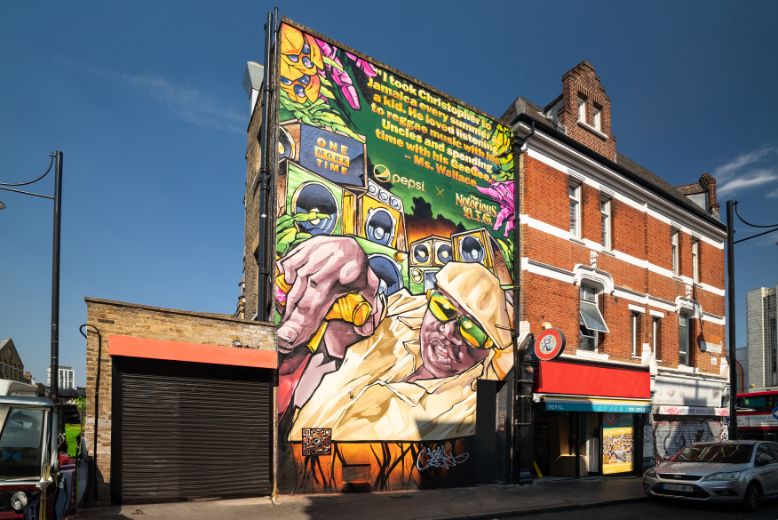
FAULT: Your mural in Brixton draws inspiration from Biggie’s Jamaican roots and childhood experiences – what inspired you to focus on this aspect of his artistry?
Jeba: My direction was triggered by an image I found of Biggie as a child in Jamaica. If Biggie was still with us, I envision him enjoying the fruits of his labour, taking trips back to Jamaica and enjoying just relaxing. Ultimately, I wanted to create a snapshot that his mother could almost have in her photo album and be happy that her son is enjoying being back in her home country.
Many originators of Hip Hop are of Jamaican descent, so it was a great opportunity, through a tribute to Biggie himself but also to the wider genre and culture that surrounds it, to shine a light on the island’s impact with the support of Pepsi MAX. The approach to music within Jamaica has inspired the development of Hip Hop culture; whether it be the knowledge of sound engineering and sound systems, or the hunger to succeed and build a better life for yourself and your circle, which is then passed on through education. With the celebration of the 50th Anniversary of Hip-Hop, I wanted to touch on this a bit, giving a nod to all that are of Jamaican descent to say “Hey don’t forget this.”
FAULT: Hip Hop culture often intertwines with street art – how important was Hip-Hop’s role in your own creative development?
Jeba: Music in general is one of the biggest inspirations for me, but Hip Hop particularly is key. To this day listening to Hip Hop with my headphones on at midnight and working in my sketchbook is one of my favourite things to do, just like when I was a young teen. I react to the music I listen to and it will inspire the skeleton of a character; how far the arms swing out, and the expression on its face.
Hip Hop has influenced the fashion I like to include in my work, the pop references, and style. The imagery that came out of hip-hop and graffiti has had a huge impact on my work. One of the things that I loved and still do was illustrated album artwork. Alongside that were the graphic t-shirts you would see in magazines and graffiti productions.
FAULT: What is your FAULT?
Jeba: Procrastination is a big something I’ve been assessing this year. With my first solo exhibition taking place in October, I’ve pushed myself to get past this demon. It usually takes place at the start of a design when I’m trying to come up with the right skeleton or composition; I’ll spend way too long redrawing or shifting shapes trying to make up my mind.
Another area I procrastinate in is admin. I think it’s fair to say many creatives do not like this part of their job.
Related
This post was originally published on this site be sure to check out more of their content.

